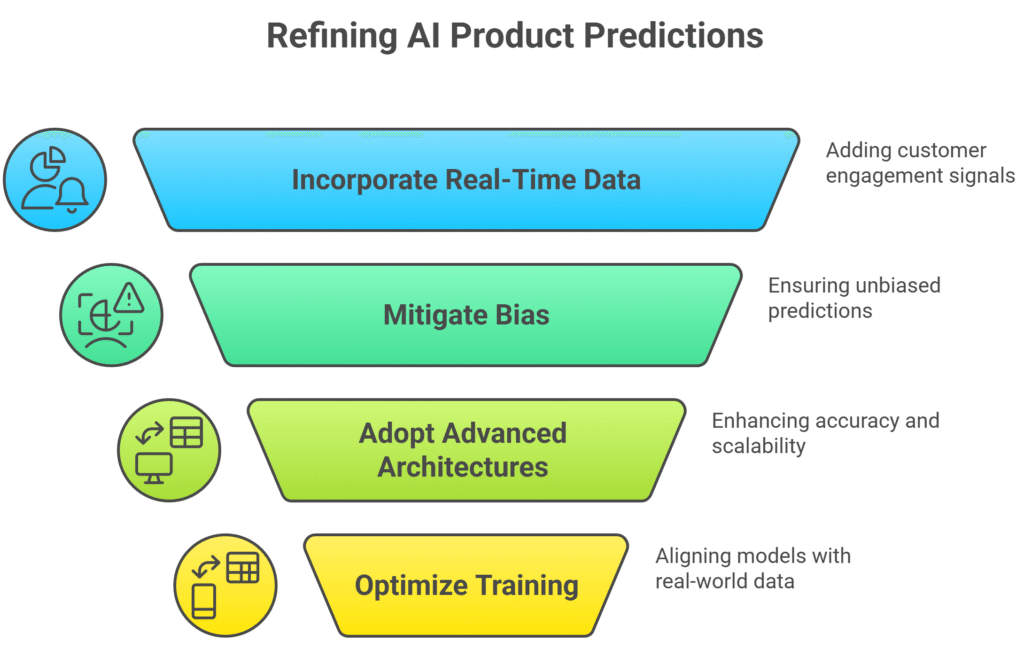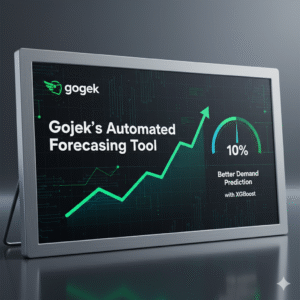Table Of Contents
- What is the Wayfair Predicted Winners Model?
- The Four Pillars of Wayfair’s Predicted Winners Model
- 1. Day Zero Model: Predicting Success from Launch
- 2. Continuous Winners Model: Harnessing Customer Engagement
- 3. Sentinel: Avoiding Self-Fulfilling Bias
- 4. Ongoing Innovations: Pushing the Boundaries
- Why the Predicted Winners Model Matters for Retail
- Practical Tips for Retailers Adopting AI Product Prediction
- The Future of Wayfair’s Predicted Winners Model
- FAQs
- Conclusion
In the fast-paced world of online retail, launching new products successfully is no small feat. With millions of products vying for attention, retailers like Wayfair face the challenge of helping customers discover the right items quickly. Enter the Wayfair Predicted Winners model, a cutting-edge machine learning system designed to predict the long-term sales potential of new products and accelerate their success. This blog dives deep into how Wayfair leverages AI, specifically its Predicted Winners model, to prioritize high-potential products, optimize customer experiences, and drive business growth. Whether you’re a retailer, data scientist, or curious consumer, this guide will unpack the model’s components, benefits, and innovations, offering actionable insights into Wayfair new product success prediction.
What is the Wayfair Predicted Winners Model?
The Wayfair Predicted Winners model is a suite of machine learning tools developed to tackle the “cold start” problem for new products. With over 30 million products and 200,000 new additions each quarter, Wayfair needed a way to identify which items have the highest potential to become bestsellers. The model uses advanced AI techniques to predict long-term sales performance, enabling Wayfair to prioritize marketing and merchandising efforts for high-potential products. By combining data-driven insights with customer engagement signals, the model ensures that new products resonate with shoppers and align with their unique sense of home.
This system is built around four key pillars: the Day Zero model, the Continuous Winners model, Sentinel, and ongoing innovations in feature engineering and model architecture. Together, these components create a robust framework for early identification of bestselling products, transforming how Wayfair introduces new items to its vast catalog.
The Four Pillars of Wayfair’s Predicted Winners Model
1. Day Zero Model: Predicting Success from Launch
The Day Zero model is the first step in Wayfair’s AI product ranking models. It predicts a product’s long-term sales potential at or even before its launch, using only intrinsic product features like:
Wholesale costs: The price Wayfair pays suppliers.
Product images: Analyzed using deep learning to extract visual features.
Product descriptions and features: Converted into embeddings for predictive modeling.
By leveraging deep learning, the Day Zero model generates embeddings from images and text, which are then combined with cost data to score a product’s potential. High-scoring products are prioritized in Wayfair’s storefront sort algorithm, ensuring they appear in prime positions for customers to discover. This day zero product sales prediction gives new products a head start, overcoming the cold start problem and driving early engagement.
Example: Imagine a new modern sofa added to Wayfair’s catalog. The Day Zero model analyzes its sleek design (via images), trendy material descriptions (like “vegan leather”), and competitive pricing to assign a high score. This sofa is then placed higher in search results, making it easier for customers to find.
2. Continuous Winners Model: Harnessing Customer Engagement
Once a product gains traction, the Continuous Winners model takes over, refining predictions by incorporating real-time customer engagement signals. These include:
Product page visits: How often customers view the item.
Add-to-cart actions: How frequently the product is added to carts.
Order volume: Actual purchases of the product.
These signals are arranged as time-series data, allowing the model to track engagement trends over time. Using LSTM networks for demand forecasting, the Continuous Winners model extracts features from this data to predict long-term sales with greater accuracy. Products with high scores become candidates for exclusive supplier partnerships, unlocking benefits like premium merchandising and flagship brand inclusion.
Case Study: A new dining table receives a high Day Zero score and is placed prominently on Wayfair’s site. Within days, it garners significant views and add-to-cart actions. The Continuous Winners model analyzes this data, confirms its potential, and flags it for an exclusivity deal, boosting its visibility further.
3. Sentinel: Avoiding Self-Fulfilling Bias
A critical question arises: Are products successful because they’re inherently great, or because Wayfair’s investments (like better sort positions) make them successful? This is where Sentinel, a continuous testing framework, comes in. Sentinel controls exposure variables that could bias predictions, ensuring the Predicted Winners machine learning Wayfair system identifies true winners based on intrinsic potential, not artificial boosts.
By isolating variables like sort position or merchandising investments, Sentinel ensures the model’s predictions remain unbiased and reliable. This is crucial for maintaining trust in the system and ensuring that investments are directed toward products with genuine customer appeal.
4. Ongoing Innovations: Pushing the Boundaries
Wayfair’s team of data scientists, engineers, and product managers continually refines the Predicted Winners model. Three key innovations stand out:
Improved Feature Engineering: By adopting Long Short-Term Memory (LSTM) networks, Wayfair automates feature extraction from customer engagement time-series data. LSTMs capture both long-term (six-month trends) and short-term (recent signals) patterns, uncovering complex relationships that human-designed features might miss. For example, LSTMs can detect how add-to-cart rates correlate with order spikes, improving prediction accuracy.
Universal Model Architecture: Instead of building separate models for each product class (e.g., couches, beds), Wayfair developed a universal architecture that enables knowledge sharing among product classes. This approach improves predictions for low-traffic categories and new product classes with limited data, ensuring robust performance across the catalog.
Optimized Training Objectives: The model uses tailored statistical distributions (e.g., Bernoulli and Log-Normal for revenue, Negative Binomial for order counts) to align predictions with real-world data. This not only boosts accuracy but also provides uncertainty measures, helping stakeholders make informed decisions.
Statistic: According to a 2023 McKinsey report, retailers using advanced AI for demand forecasting can improve prediction accuracy by up to 20%, directly impacting revenue and inventory efficiency. Wayfair’s innovations align with this trend, positioning it as a leader in machine learning in retail product prioritization.mckinsey.com
Why the Predicted Winners Model Matters for Retail
The Wayfair Predicted Winners model addresses a universal challenge in e-commerce: efficiently launching new products in a crowded market. Here’s why it’s a game-changer:
Enhanced Customer Experience: By prioritizing high-potential products, Wayfair ensures customers find items that match their style and budget, reducing search friction.
Optimized Investments: With 200,000 new products added quarterly, Wayfair can’t invest equally in all. The model directs resources to products with the highest ROI, maximizing profitability.
Scalability: The universal model architecture and automated feature engineering make the system adaptable to new product classes and growing catalogs.
Bias Mitigation: Sentinel ensures predictions are based on intrinsic product quality, not artificial boosts, fostering trust and reliability.
Trend Alert: A 2024 Gartner report highlights that 75% of retailers plan to increase investments in AI-driven demand forecasting by 2026, reflecting the growing importance of tools like Wayfair’s Predicted Winners model.gartner.com
Practical Tips for Retailers Adopting AI Product Prediction
Inspired by Wayfair’s success, here are actionable tips for retailers looking to implement AI-powered product success prediction software:
Leverage Intrinsic Features: Start with product attributes like cost, images, and descriptions to predict potential before launch.
Incorporate Real-Time Data: Use customer engagement signals (views, carts, orders) to refine predictions as products gain traction.
Mitigate Bias: Implement testing frameworks to ensure predictions reflect true product potential, not marketing boosts.
Adopt Advanced Architectures: Use LSTMs and universal models to improve accuracy and scalability, especially for niche categories.
Optimize Training: Align model objectives with real-world data distributions to enhance predictions and provide uncertainty measures.
Example: A furniture retailer launching a new line of outdoor chairs can use image-based deep learning to score products, prioritize high-scorers in search results, and track engagement to refine predictions, mirroring Wayfair’s approach.

The Future of Wayfair’s Predicted Winners Model
Wayfair’s team is already exploring new frontiers for the Predicted Winners model. Future initiatives include:
New Features: Incorporating neighbor products and customer reviews to enhance predictions.
Explainability: Developing tools to explain why certain products succeed, providing actionable insights for suppliers.
Bestseller Engine: Positioning Predicted Winners as a tool to nurture the next generation of bestsellers.
These advancements align with industry trends, as a 2024 Forrester report predicts that AI-driven retail analytics will drive 30% of e-commerce revenue by 2027.
What is the Predicted Winners model at Wayfair?
It’s a machine learning system that predicts the long-term sales potential of new products using intrinsic features (Day Zero) and customer engagement signals (Continuous Winners), supported by bias-control mechanisms like Sentinel.
What are the main components of Wayfair’s product prediction system?
The system comprises the Day Zero model (initial predictions), Continuous Winners model (engagement-based refinements), Sentinel (bias control), and ongoing innovations in feature engineering and model design.
How does Wayfair predict long-term sales potential for new products?
Wayfair uses the Day Zero model for initial predictions based on intrinsic features, followed by the Continuous Winners model, which refines predictions using real-time engagement data.
How does the Continuous Winners model use customer engagement signals?
It arranges signals like page views, add-to-carts, and orders as time-series data, using LSTMs to extract predictive features for long-term sales.
How does Wayfair avoid bias in identifying winning products?
The Sentinel framework controls exposure variables (e.g., sort position) to ensure predictions reflect intrinsic product potential, not investment-driven outcomes.
Can machine learning models improve retail product launches?
Yes, models like Wayfair’s improve launches by identifying high-potential products early, optimizing marketing, and enhancing customer discovery.
Should retailers invest more in early product performance prediction?
Absolutely. Early prediction reduces wasted resources, boosts ROI, and improves customer satisfaction, as evidenced by Wayfair’s success.
Is knowledge sharing among product classes beneficial for forecasting?
Yes, it enhances predictions for new or low-data categories, making forecasting more robust and scalable.
FAQs
Conclusion
The Wayfair Predicted Winners model is a shining example of how machine learning in retail product prioritization can transform new product launches. By combining the Day Zero model, Continuous Winners model, Sentinel, and cutting-edge innovations, Wayfair ensures customers discover high-quality products while optimizing its investments. For retailers, adopting similar AI product ranking models offers a path to better customer experiences, higher ROI, and scalable growth. As Wayfair continues to refine its model, it’s paving the way for the future of e-commerce, where data-driven decisions turn new products into bestsellers.
Ready to explore AI for your retail business? Check out Wayfair’s approach for inspiration and consider investing in machine learning tools for new product demand forecasting to stay ahead of the curve.Visit CareerSwami For More.


















